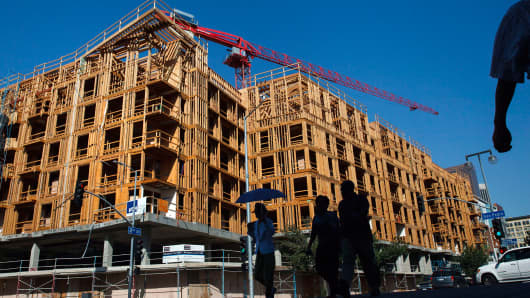This article featured below tells about how much the Rental Rates have increased. And in the past 8 months this rate has been about 5% or higher! Read more about where the market is headed…
It is the year of the apartment — 2.0.
While some thought the skyrocketing rents of 2014 couldn’t be sustained, they did, and then some. There’s no sign of any easing any time soon.
Annual rent growth in September was 5.2 percent, the highest since 2011 and the eighth-straight month the rate has been 5 percent or higher, according to Axiometrics, an apartment research firm. Annual rent growth was at 4.1 percent a year ago, which was still considered high.
“The eight months the rate has been above 5 percent is the longest sustained period of strength we have seen. The last growth cycle was only four years, and this cycle is already five years long — with no sign of stopping,” said Stephanie McCleskey, vice president of research at Axiometrics.
While apartment construction has been strong, it hasn’t been enough or in the places where it is most needed. Now, there are signs it may be tempering. Permits for multifamily construction dropped nearly 15 percent in September from August and are now 1 percent below September 2014, according to the U.S. Census.
The vast majority of new supply has been in pricier areas, in particular major urban cores, which has not helped renters in the suburbs or in smaller cities who are in dire need of more affordable rental housing.
Read MoreWant a discount on a house? Drive way out of town
“New inventory coming to market is weighted to the high end; it’s urban, Class A, with a rich set of amenities, targeting the coveted college-educated millennial,” said Sam Chandan, president of Chandan Economics. “Overall, we still have an affordability crisis in the United States with rents rising faster than incomes for the fourth-consecutive year.”
Apartments were 95.3 percent occupied in September nationally, a slight drop from August, but the third-strongest month this year, according to Axiometrics, which considers anything above 95 percent as a “full” market. Occupancy has been at or above 95 percent for six-straight months and 10 of the past 16.
It is clearly a tale of two apartment markets. The pipeline of new product is rich and full in urban downtowns, which will likely temper the rent gains there over the next few years. When doing the math on suburban or Class B markets, however, developers and investors just don’t see desirable returns. Weak income growth will simply not support rent growth.
“When you’re evaluating that as your target market, there is only so hard you can push on rents,” Chandan said.
Read MoreHousing today: A ‘bubble larger than 2006’
While some studies have shown that it is now more affordable to buy a home than to rent, several factors keep rental demand high: a lack of homes for sale, especially on the lower end, a desire by younger Americans to remain mobile, a downsizing baby boom generation that may be owning-averse, and high rents themselves keeping potential buyers from being able to save for a down payment.
Rent gains have been largest in cities with growing technology sectors, like Seattle, Denver and Portland, Oregon, but growth is also above average in Nashville, Charlotte and several cities in Florida. Playing into that demand is simple demographics.
“Younger, newly formed households continue to move out of their parents’ or roommate living arrangements and rent an apartment, driving up the demand for more rental units,” said David Crowe, chief economist for the National Association of Home Builders. He said the trend is expected to continue into 2016.
As single-family construction gains, perhaps the rent crisis will ease, but homebuilders like Lennar and Toll Brothers are hedging their bets, putting up rental apartments as well. Thirty-five percent of new home starts in 2015 have been multi-unit. That is higher than a year ago and the highest share since 1973. Developers are simply going to where demand is highest and most lucrative.
http://www.cnbc.com/2015/10/20/think-your-rents-too-darn-high-just-wait.html

